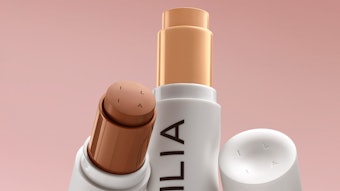In "Redefining the 'Lipstick Effect'—Examples of Recession-Proof Categories," Audre Biciunaite, a contributing analyst for Euromonitor International, delves into how various consumer categories were affected by the economic downturn. Many beauty categories, as it turns out, offered resilient opportunities.
Biciunaite writes, "When an economy enters troubled waters, this does not spell bad news for all categories. 'Affordable luxury,' for example, tends to perform well in a recessionary environment. This trend became known as the 'lipstick effect,' a term coined by Leonard Lauder, Chairman of Estée Lauder, when he observed that lipstick sales tend to be inversely correlated to economic health. While lipstick sales did not withstand the recent recession, there is some evidence that the 'affordable luxury' effect is still present, but manifesting itself in different categories over time. Nail polish, for instance, could be considered the new lipstick, but the lipstick of choice varies with time and geography. (Figure 1)
Whether by accidental correlation or strong underlying psychological/economic motives, lipstick sales have historically performed well during slowdowns and equally poorly when an economy was strong. Over the last decade, for example, sales of lipstick lagged behind the overall beauty and personal care industry every year, except during the 2000 slowdown, when sales of lipstick boomed. The speculation was that women substitute more expensive purchases like dresses and shoes for lipstick during times of economic distress. The trend whereby certain categories do well during recessions became known as the lipstick effect.
"The only problem with the lipstick effect was that it looked convincing only until the last recession. In contrast to a strong performance in the early 2000s, lipstick was outperformed by many other cosmetic items and was one of the weakest categories in the entire beauty and personal care industry during the recent recession. In 2009, lipstick sales in the U.S. dropped by almost 7%. Only consumers in the U.K. maintained their spending on lipstick that year, while sales in Italy, France and Spain declined.
"At face value at least, the lipstick theory suffered a setback since sales of lipstick were not strong during the recent slowdown. However, if we consider lipstick as a metaphor, the effect is still present and in good shape. When faced with less favorable economic conditions, consumers tend to save on big-ticket items, such as holidays abroad, but spend more on small, feel-good products. This trend manifests itself in different categories over time and place. In 2000, it was lipstick, in 2008, other categories.
"Nail polish, for example, could be considered the new lipstick of the last recession. In 2008/2009, nail polish was the fastest growing category in the global beauty and personal care industry, and it was austerity-hit Western markets driving growth as cash-strapped women rediscovered nail polish as an affordable fashion accessory and a morale booster. (Figure 2)
"Between 2008 and 2011, nail polish achieved double-digit retail sales growth in the U.S., Germany, the U.K. and Italy. Even in recession-hit Spain, demand for nail polish increased slightly, in contrast to the otherwise depressed performance of the color cosmetics category, as well as the overall retail environment. (Figure 3)
"Although we may no longer be able to validly refer to the lipstick sales as an economic indicator, a number of new categories which fit the concept of affordable luxury have emerged since 2009. It is interesting to look at what these new lipsticks might be in different countries and over time.
"Mascara in the U.S.: In the U.S. and several EU countries, it was mascara and similar products promising ever thicker, longer lashes that made up for weaknesses elsewhere in cosmetics. Strong mascara sales were seen both during the economic downturn in the early 2000s and during the 2009 recession. There is little doubt that technological innovations within mascara (and their accompanying higher prices) supported value sales growth following the successful 2008 launches from premium players Estée Lauder and Lancôme.
"Hair colorants in the UK: In the U.K., the recent economic downturn coincided with a renaissance of the hair colorants category. Following the start of the recession, supermarket sales of home hair color kits rose sharply, with Tesco reporting a 200% leap for its £0.99 permanent hair color line in November 2008, while overall hair colorant sales were up 9% in 2008/2009. Italians, on the other hand, increased their spending on shampoos and conditioners, giving a boost to the wider hair care category."
Biciunaite also share non-beauty category examples, such as impulse foods items. (Figure 4)
Biciunaite also explained, "While the lipstick effect may no longer be applicable to lipstick itself, the concept remains and is still going strong, thriving on the back of consumers’ desire to splash out on small things so as to make life 'worth living.' While the manner and form of the lipstick effect is different in individual countries and categories over time, in the end the one thing that all of these recession-proof items have in common is that they offer instant gratification and are generally affordable. In this context, however, 'affordable' does not necessarily mean cheap or the cheapest, but rather the opposite, as illustrated by Europe’s growing demand for fine wines and champagnes, premium ice cream and other premium products during the 2008/2009 downturn.
"The lipstick effect theory is therefore all about shopper-defined affordability, offering lucrative opportunities for manufacturers and distributors. It would appear that instead of focusing on the cheapest possible products to boost sales, the winning retail strategy during a recession in developed markets is to find the right answer to the question, 'What can the shopper afford right now?'," Biciunaite concluded.










